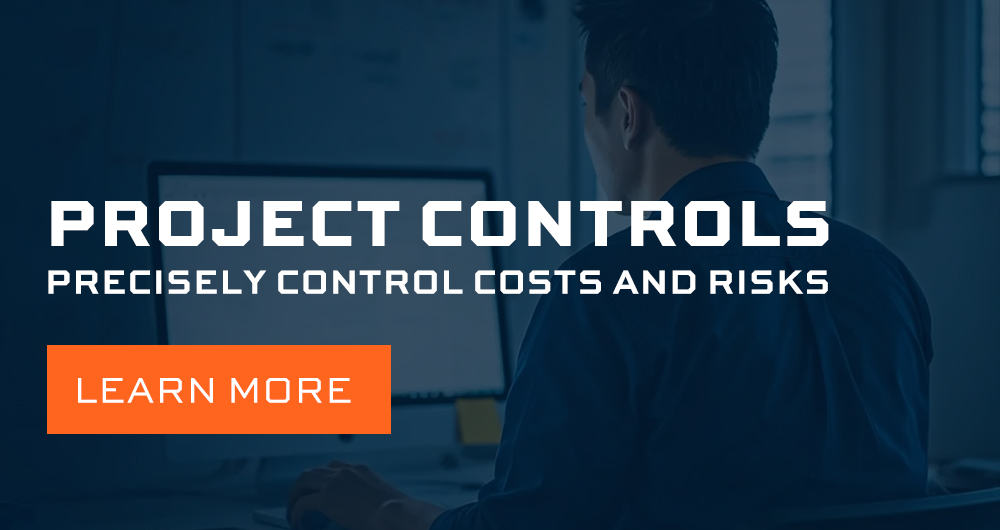As capital projects become more complex, we know that managing these costly assets means bringing crucial data together in new and better ways. One of these is through the creation of digital twins, permanent 3D replicas that serve as virtual snapshots of deliverables.
Their value is already being realized on a global scale. The Victorian government, for example, has launched Digital Twin Victoria, and is dedicating funds to the Digital Twin Data Visualization Lab at The University of Melbourne’s Melbourne Connect.
How can you leverage the power of digital twins for your asset management? Let’s dig in!
Defining and Understanding Digital Twins and Data Visualization
The digital twin is a permanent digital replica and record of the physical asset. It is constantly enriched during the execution of the actual work. This provides more insight into the serviceability of the asset during its operational lifespan and enables a more proactive approach to supporting and extending this lifespan.
Digital twins are achieved by what we call knowledge or project data. To begin, we need a 3D model which depicts the physical dimensions of the asset being built. Imagine adding additional attributes (the project data) to the basic physical attributes in a 3D model. These may include installation activities, who carried out the work, quantities installed, risks identified, issues encountered during installation, and time at which the installation was conducted.
The digital twin captures the information during the project life cycle, thus allowing that information to be analyzed and leveraged. Why is this important to asset management? Because it represents a giant leap forward in the knowledge management process. And the benefit of recording the asset being delivered is rapidly gaining the attention of owner organizations. In fact, some owners are now assigning monetary value to the asset itself when these digital twins are present. But there’s so much more to it.
Exploring the Role Digital Twins Play in Enhancing Asset Management
As capital projects become more complex, we have had to find ways to increase accuracy and heighten collaboration. By collecting data throughout the construction execution phase for final inclusion within a digital twin, owners can get real-time insight into the status of their projects.
Technologically, the industry has advanced to the point that owners and contractors should always be able to collaborate on software for asset management and closeout through a 3D model. Such a solution can help contractors and owners manage this equipment handover and continuous project closeout.
Ideally, you want to center what is referred to as a common data environment (CDE) around your model. Therefore, you’ll need accessible visualization software that enables a CDE to tie together project information from various sources, such as modeling software, handover activities and spreadsheets.
Some features to look for include:
- Adaptability for use before and during construction
- Built to meet owner and operations needs after construction
- Unlimited user access for all parties on projects
- Optimal for post construction archiving and creation of a digital twin
It’s also important to provide your team tools with which to coordinate throughout construction and operations from an aggregate view of all 3D models using a high-performance 3D viewer.
This will allow any team member with permissions to access vital project information and navigate to and visualize each revision of your 3D environment. With the right software tools, you should be able to do this by using advanced searching capabilities through tags, areas, handover packages and more to find exactly what you’re looking for.
Today’s best modeling tech also offers spatial coordination and clash detection so project teams can identify, assign, and track coordination issues through resolution in the aggregated 3D environment, and quickly visualize problem areas and issue status within the latest project model.
By tracking quantities and pushing changes to your estimating solution, you can keep quantity information up to date throughout design changes.
Want to take things a step further? If you choose to integrate this data within an advanced work packaging solution, you can also create and manage work packages in your model, visualize planned scope and sync back to your plan solution to manage field execution.
How Data Visualization Is Reshaping Construction Collaboration
The visual nature of a 3D project model can bring clear and precise information to the forefront for all stakeholders, giving new meaning to the old adage that a picture is worth a thousand words.
But what if you can’t get all of your stakeholders to reap the benefit because they believe they don’t have time to learn another software program? Let’s look at some of the manual methods used by these same individuals.
One method to track construction progress could be highlighting plan drawings, which need to be re-highlighted for new revisions. Another method might be utilizing a spreadsheet. And yet another method could be through graphs and pie charts. All three are effective, but are they painting the clear picture you are looking for? Fortunately, you can bring all of these together within today’s 3D modeling technology to:
- Track and communicate generalized construction status
- Track and communicate subcontractor status, i.e., not started, material on site, drilled pier hole, rebar cage installed, delays or issues, etc.
- Filter your model down to work areas and visualize trades in the same area to identify any possible congested areas according to space and schedule
- Use external model information linked to model data to visualize material status (ordered, in fabrication, on site, etc.) to help with planning chunks of work
- Visualize Work Packaging or Work Face Planning to provide a whole new level of understanding project status, trades in the same area, safety concerns and more
Ideally, these examples have already triggered some thoughts on how you could colorize your 3D model to better share what is important within your project team.
Just remember that though the right 3D model visualization can bring great value and reality to the overall project, communicating data and information in a concise method for all to understand is crucial.
Capturing construction information within the model or in applications linked to model metadata provides the most efficient method to not duplicate effort and visualize up-to-date project information for asset management and so much more.
Ready to take a deeper dive? Schedule a one-on-one consultation to find out how InEight can help you succeed in your construction digitalization and modeling journey.




